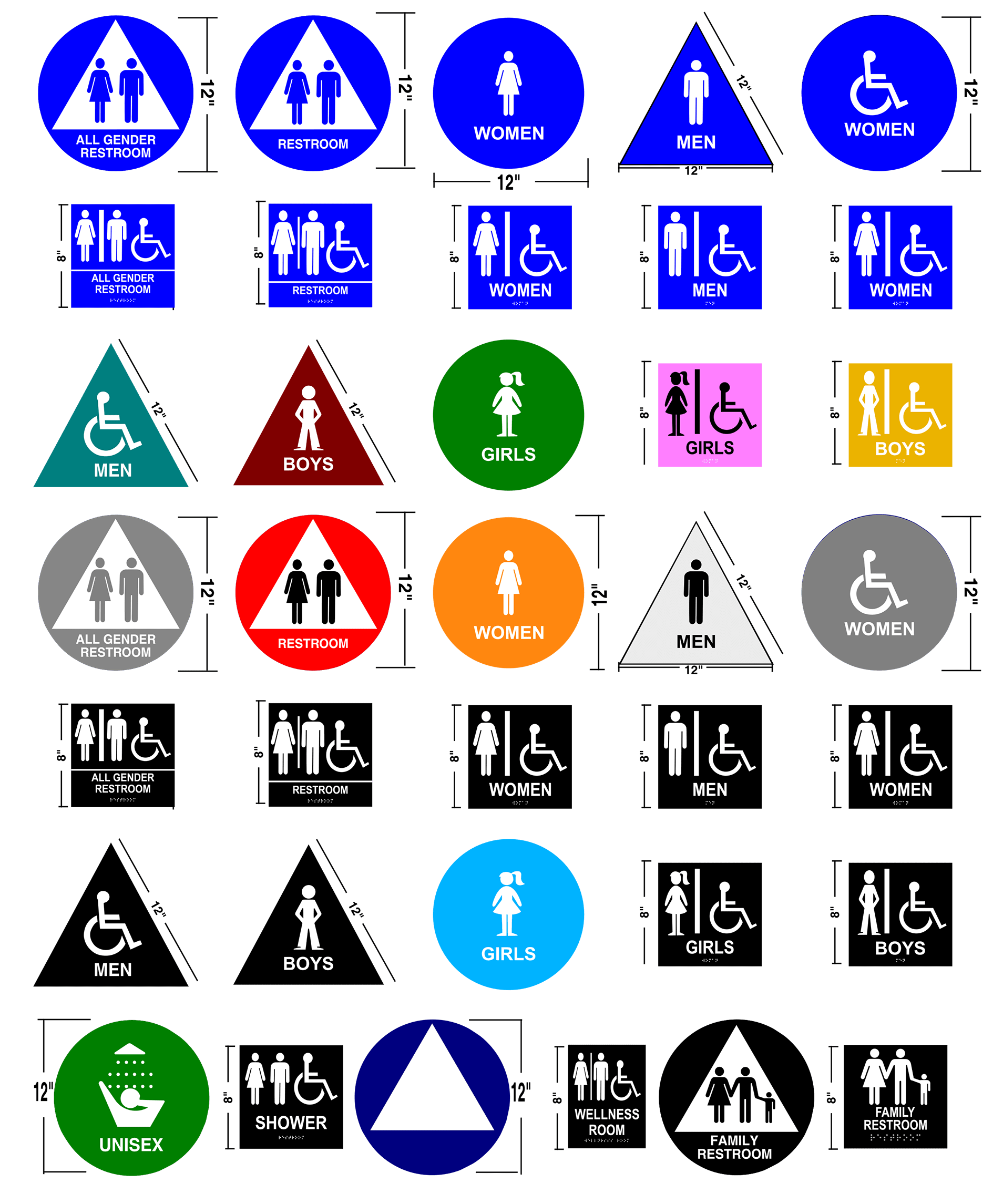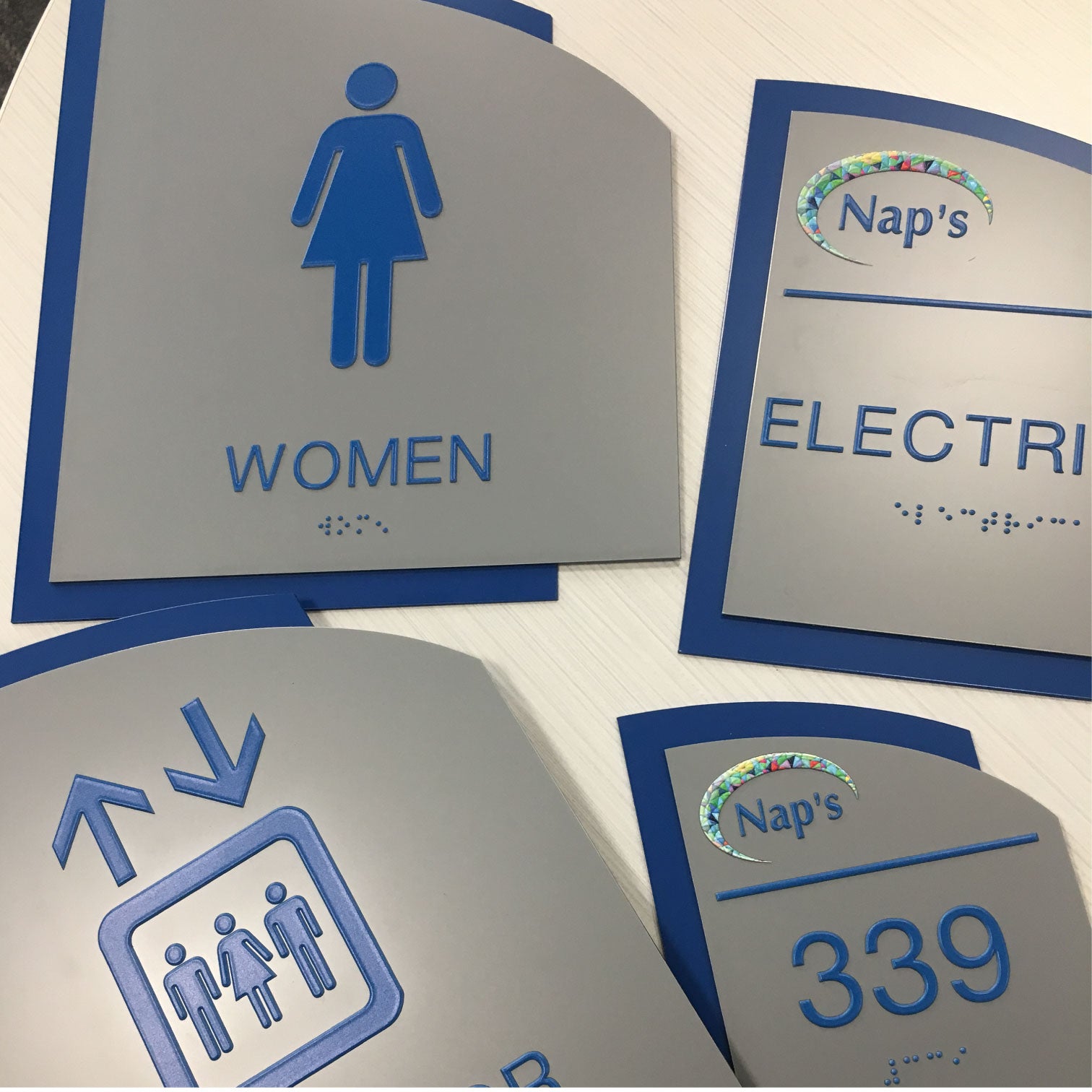ADA Signs: Important Devices for Inclusive Atmospheres
ADA Signs: Important Devices for Inclusive Atmospheres
Blog Article
Exploring the Secret Features of ADA Indicators for Improved Access
In the realm of access, ADA indicators serve as silent yet powerful allies, making certain that areas are inclusive and navigable for individuals with specials needs. By incorporating Braille and responsive elements, these signs damage obstacles for the visually impaired, while high-contrast color schemes and understandable typefaces provide to varied aesthetic needs.
Relevance of ADA Conformity
Ensuring compliance with the Americans with Disabilities Act (ADA) is essential for fostering inclusivity and equivalent access in public spaces and workplaces. The ADA, passed in 1990, mandates that all public centers, employers, and transport solutions fit people with impairments, guaranteeing they take pleasure in the very same rights and chances as others. Compliance with ADA criteria not only satisfies legal obligations however also enhances a company's reputation by showing its commitment to variety and inclusivity.
One of the crucial aspects of ADA conformity is the implementation of accessible signage. ADA indicators are developed to guarantee that individuals with disabilities can quickly navigate via spaces and structures.
In addition, adhering to ADA policies can alleviate the risk of prospective penalties and legal effects. Organizations that stop working to adhere to ADA guidelines may encounter legal actions or fines, which can be both harmful and economically difficult to their public photo. Hence, ADA conformity is essential to cultivating an equitable environment for everyone.
Braille and Tactile Aspects
The consolidation of Braille and tactile aspects right into ADA signs personifies the principles of accessibility and inclusivity. These attributes are essential for individuals who are aesthetically impaired or blind, enabling them to navigate public spaces with higher self-reliance and confidence. Braille, a tactile writing system, is necessary in offering created info in a layout that can be conveniently viewed through touch. It is typically positioned beneath the corresponding text on signs to ensure that people can access the info without aesthetic aid.
Tactile components extend beyond Braille and include increased signs and characters. These components are made to be noticeable by touch, permitting individuals to recognize room numbers, washrooms, exits, and various other critical locations. The ADA establishes certain guidelines concerning the dimension, spacing, and positioning of these tactile elements to maximize readability and make certain uniformity across various settings.

High-Contrast Shade Schemes
High-contrast color design play a critical function in enhancing the exposure and readability of ADA signage for people with visual disabilities. These systems are crucial as they take full advantage of the distinction in light reflectance between message and history, guaranteeing that signs are easily noticeable, even from a website here distance. The Americans with Disabilities Act (ADA) mandates the usage of details color contrasts to accommodate those with minimal vision, making it a critical aspect of conformity.
The efficacy of high-contrast shades depends on their ability to attract attention in various lights conditions, including poorly lit settings and locations with glare. Generally, dark text on a light history or light message on a dark history is used to attain ideal contrast. For instance, black message on a yellow or white background offers a plain aesthetic difference that helps in quick recognition and understanding.

Legible Fonts and Text Size
When taking into consideration the design of ADA signage, the choice of legible typefaces and ideal text dimension can not be overemphasized. The Americans with Disabilities Act (ADA) mandates that typefaces need to be not italic and sans-serif, oblique, manuscript, extremely ornamental, or of unusual form.
According to ADA guidelines, the minimum text height need to be 5/8 inch, and it should boost proportionally with watching distance. Uniformity in message size contributes to a cohesive aesthetic experience, aiding people in browsing atmospheres efficiently.
In addition, spacing between lines and letters is essential to clarity. Sufficient spacing protects against characters from showing up crowded, enhancing readability. By adhering to these criteria, designers can significantly boost availability, ensuring that signage serves its designated purpose for all individuals, despite their aesthetic capabilities.
Effective Positioning Strategies
Strategic placement of ADA signs is important for maximizing accessibility and making certain conformity with legal requirements. Appropriately located indications guide individuals with specials needs properly, facilitating navigation in public spaces. Secret factors to consider include closeness, presence, and height. ADA standards specify that indicators should be mounted at a height between 48 to 60 inches from the ground to ensure they are within the line of view for both standing and seated people. This standard elevation array is crucial for inclusivity, allowing wheelchair individuals and individuals of varying elevations to accessibility details easily.
In addition, indicators need to be placed nearby to the latch side great post to read of doors to permit simple recognition before entry. Uniformity in indication positioning throughout a center improves predictability, reducing complication and improving general user experience.

Verdict
ADA indications play a vital role in promoting accessibility by integrating features that resolve the requirements of people with specials needs. These aspects collectively promote an inclusive environment, emphasizing the relevance of ADA conformity in making sure equal access for all.
In the world of availability, ADA indicators offer as silent yet powerful allies, making certain that rooms are accessible and comprehensive for individuals with handicaps. The ADA, established in 1990, mandates that all public facilities, companies, and transport solutions accommodate people with handicaps, ensuring they take pleasure in the exact same legal rights and opportunities as others. ADA Signs. ADA indicators are created to guarantee that people with disabilities can conveniently navigate through structures and areas. ADA standards stipulate that indicators ought to be placed at a height in between 48 to 60 inches from the ground to guarantee they are within the line of sight for both standing and seated people.ADA indications play a vital function in promoting availability by integrating attributes that attend to the needs of people with disabilities
Report this page